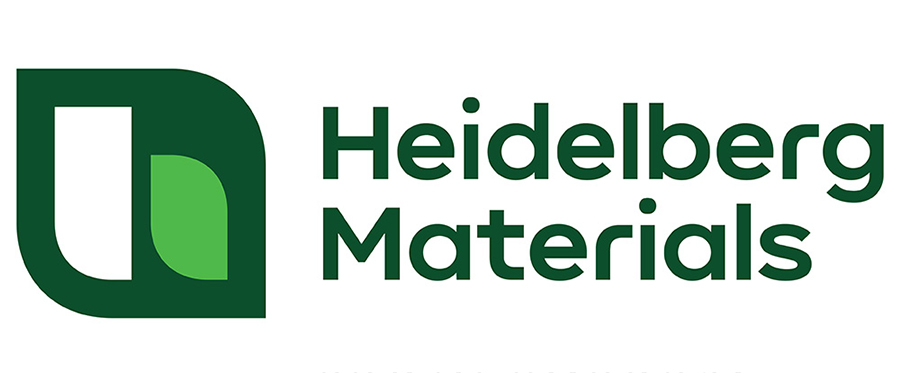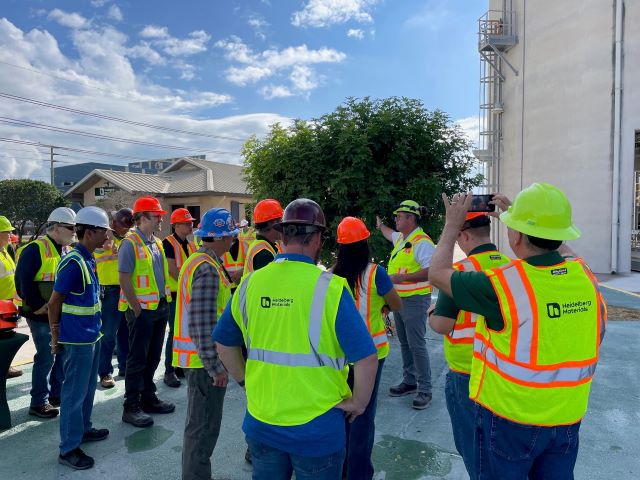Achieving carbon neutrality is a global challenge, so global companies like Heidelberg Materials have a powerful role to play when it comes to information-sharing and education. Heidelberg Materials takes that responsibility seriously and has instituted a variety of pathways to share learnings and best practices, across countries and around the world.
“To move to a more sustainable future, the concrete and cement industries aim to reach carbon neutrality by 2050, and Heidelberg Materials has the added goal of achieving 50% of our total revenue from sustainable products and solutions by 2030. But we can’t do that alone—we need to partner with people across the entire value chain, sharing our proven solutions and coming up with new ideas together,” said Larry Rowland, Sustainability Market Manager, Heidelberg Materials North America.
“The goal of achieving 50% of total revenue from sustainable products and solutions by 2030 ties into two building blocks of our sustainability commitment: the net-zero block, which is focused on lowering our carbon footprint, and the circularity block, which focuses on recycled materials. Both will be measured against a 30% improvement target compared to 2020 for a global threshold,” said Nicola Kimm, Chief Sustainability Officer, Heidelberg Materials.
Leadership in sustainability begins with employee development, including structured training programs that empower personnel. To reach customers, designers and owners, Heidelberg Materials works with trade groups and associations, conducting workshops and other events. The company also hosts its own educational events such as webinars and on-demand courses.
A recent webinar, “Mastering Sustainable Concrete: on the Road to Net Zero Construction,” demonstrated to specifiers and designers how to make choices that promote decarbonization. The webinar focused on the environmental impact of carbon emissions related to concrete (including a basic overview of the material science of concrete). It covered the industry’s Roadmap to Net Zero Concrete and real-life examples of how to reduce the environmental footprint of concrete, including using specific materials and techniques during project planning, design, and construction. Solutions such as using alterative binders and blended cement products were outlined, as was the company’s plans to employ emerging Carbon Sequestration and Carbon Capture Utilization and Storage (CCUS) strategies.
A second webinar for the audience of designers and specifiers, “Decarbonizing Concrete: on the Road to Net Zero Construction – Moving from Low Carbon Concrete to Net Zero Concrete, Starting Now,” did a deep dive on the technical topic of processing landfilled coal ash and an in depth look at the planned application of the world’s first full scale CCS project in the cement sector to be installed at Heidelberg Materials’ facility in Edmonton, Alberta, Canada.
In a recent sustainability success story, Heidelberg Materials’ Northwest Regional team worked with industry association partners to avert a prescriptive low carbon concrete procurement policy in British Columbia, Canada, in favor of a performance-based specification which will result in lower carbon in better concrete. In another instance, Heidelberg Materials supplied 1,000 metric tons of TXActive® photocatalytic cement for the creation of precast façade panels for the Fred D. Thompson United States Courthouse and Federal Building in Nashville, Tennessee. The panels will remain clean and effectively abate urban smog, because when combined with sunshine, the TX Active® cement will be self-cleaning while reducing air pollutants.
Heidelberg Materials’ combination of internal training, educational sessions and documented success stories ensures that the company is helping the industry take coordinated steps toward sustainability. For more information, see Heidelberg Materials’ sustainability page.


